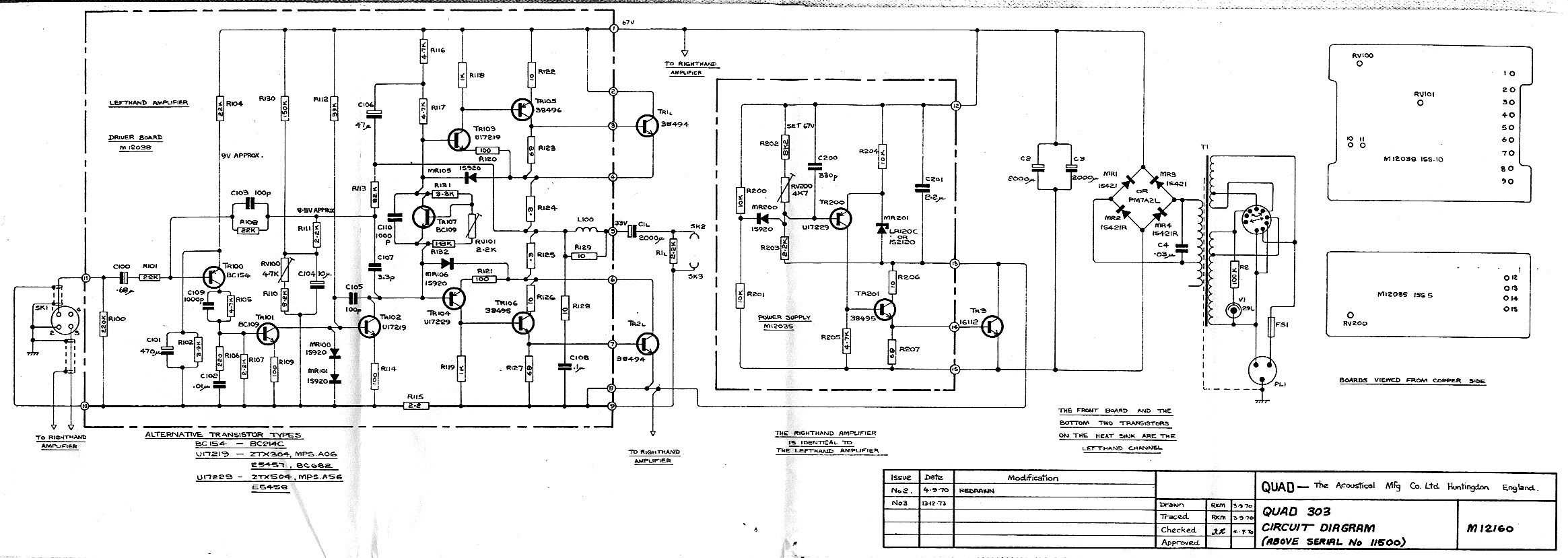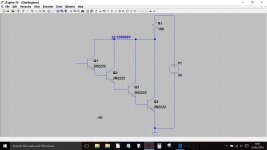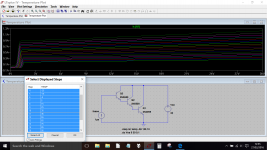lets say if you had some darlington transistors. and you "darlingtoned" them together and attempted to repeat this pattern....
when would there be diminishing returns?
being so sensitive it conducts fully on just from the microscopic current/voltage existing in the atmosphere or something?
Or is there no such thing as doing so? (wouldn't work for some reason?)
when would there be diminishing returns?
being so sensitive it conducts fully on just from the microscopic current/voltage existing in the atmosphere or something?
Or is there no such thing as doing so? (wouldn't work for some reason?)
Could I build a simulation of a mosfet or FET using this with some capacitors or something? I'm assuming i'd need more than just the positive side. and the capacitor/s would need to stay charged long enough to get an accurate result?
I was thinking of experimenting to get a similar reaction.
I was thinking of experimenting to get a similar reaction.
EF3 outputs tend to be temperamental enough, I imagine an EF4 would be a nightmare to stabilize in feedback. (EF4 would be enough to go from just about the smallest transistor you can even buy to 15 amp jobs.) Maybe with some nested feedback or something...
There basically is nothing keeping you from replacing one half of a complementary output with a plain ol' resistor though, aside from the usual implications of going SE of course. Fine for stuff like stability, though if in doubt the negative half is going to be slower and hence more critical.
There basically is nothing keeping you from replacing one half of a complementary output with a plain ol' resistor though, aside from the usual implications of going SE of course. Fine for stuff like stability, though if in doubt the negative half is going to be slower and hence more critical.
lets say if you had some darlington transistors. and you "darlingtoned" them together and attempted to repeat this pattern....
when would there be diminishing returns?
being so sensitive it conducts fully on just from the microscopic current/voltage existing in the atmosphere or something?
Or is there no such thing as doing so? (wouldn't work for some reason?)
Darlingtoned them together, needs a diagram to show, if you mean parallel, or series,
and if connected in a single ended, or dual rail supply.
If you repeated the pattern you would end up with an incredibly high gain 'transistor', but it would be unusable. You would need to overcome all the 0.6 volt base and emitter volt drops to get it to turn on.
A power FET is much better if you want something that you can control by just touching it with your finger.
A power FET is much better if you want something that you can control by just touching it with your finger.
If I was using https://en.wikipedia.org/wiki/Sziklai_pair instead of darlingtons
Would that make it possible to have many of them paired up with minimal increased voltage requirements for the base?
Since if you had two of them. then paired them up wouldn't it be the same as making one pair in the first place?
I also noticed it turns a NPN into a final PNP with the NPN as the driver but the PNP as the one to control the NPN.
which is interesting. since if you needed a PNP but needed the power of an NPN then that'd work.. Then that also means if you had 3 transistors. NPN PNP then NPN. it'd be transformed from NPN to PNP then NPN?
Kind of interesting but would that work?
Would that make it possible to have many of them paired up with minimal increased voltage requirements for the base?
Since if you had two of them. then paired them up wouldn't it be the same as making one pair in the first place?
I also noticed it turns a NPN into a final PNP with the NPN as the driver but the PNP as the one to control the NPN.
which is interesting. since if you needed a PNP but needed the power of an NPN then that'd work.. Then that also means if you had 3 transistors. NPN PNP then NPN. it'd be transformed from NPN to PNP then NPN?
Kind of interesting but would that work?
It's time to read a few more threads and do your own research by checking out the amplifier designs discussed here for yourself. There have been many commercial amplifiers that use various CFP/EF combinations in triples. That's Szlikai/Darlington type in your terms but none of this fits the definitions anyway.
Just as explained earlier, forget the masses of pointless gain when stability gets worse as you increase the number of close coupled devices and worse again with CFP coupling. The diminishing returns just keep diminishing unless you become a solid-state genius in the future and solve the problems for Physicists, Engineers and Scientists everywhere.
Quad 303 model is a well-known example of such a conjugate compound output stage. Note the different mixes in the upper and lower triples to also form a Quasi-complementary output stage:

Just as explained earlier, forget the masses of pointless gain when stability gets worse as you increase the number of close coupled devices and worse again with CFP coupling. The diminishing returns just keep diminishing unless you become a solid-state genius in the future and solve the problems for Physicists, Engineers and Scientists everywhere.
Quad 303 model is a well-known example of such a conjugate compound output stage. Note the different mixes in the upper and lower triples to also form a Quasi-complementary output stage:

- Status
- This old topic is closed. If you want to reopen this topic, contact a moderator using the "Report Post" button.
- Home
- Amplifiers
- Solid State
- double-darlington transistor stages and diminishing returns?

